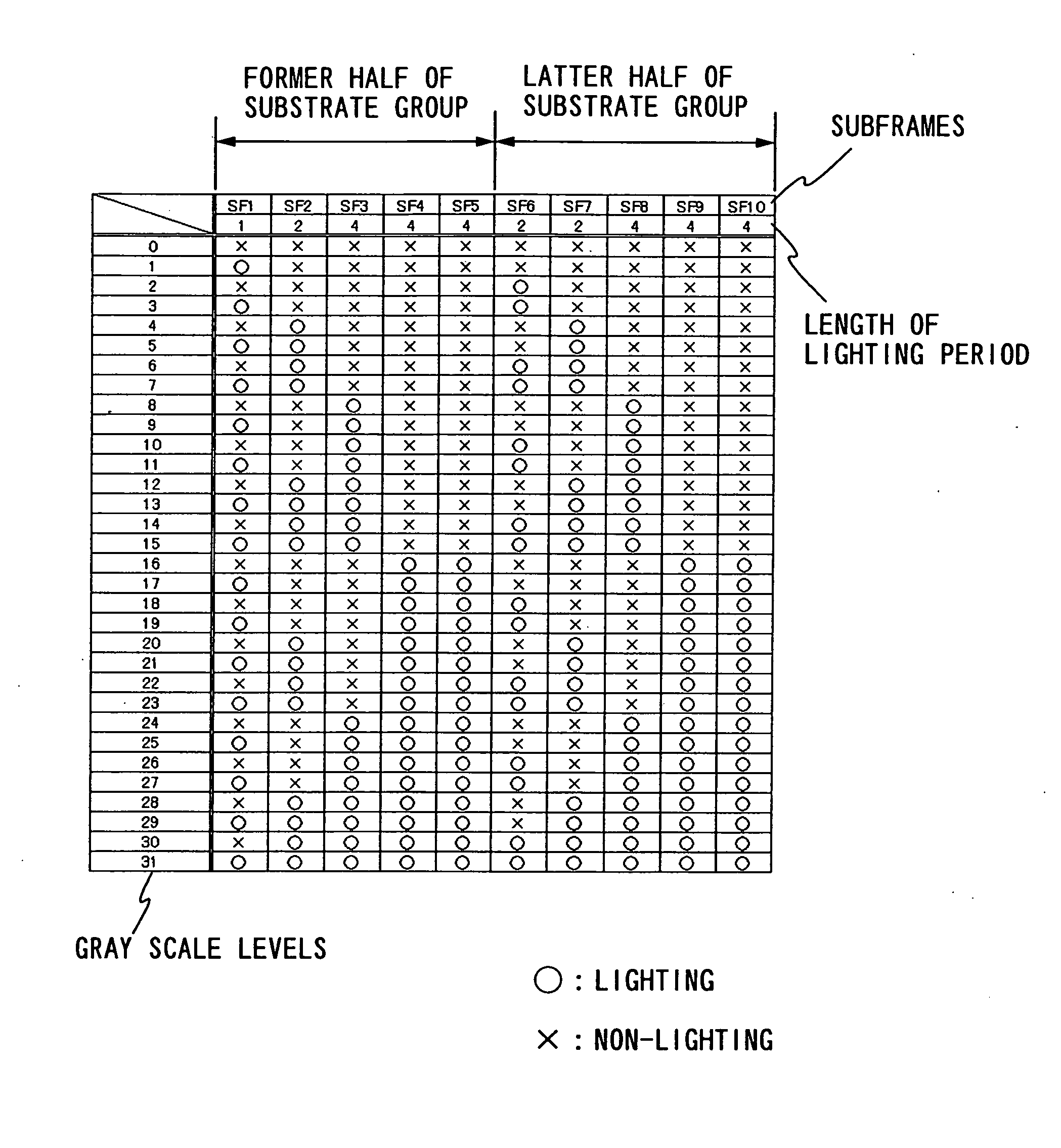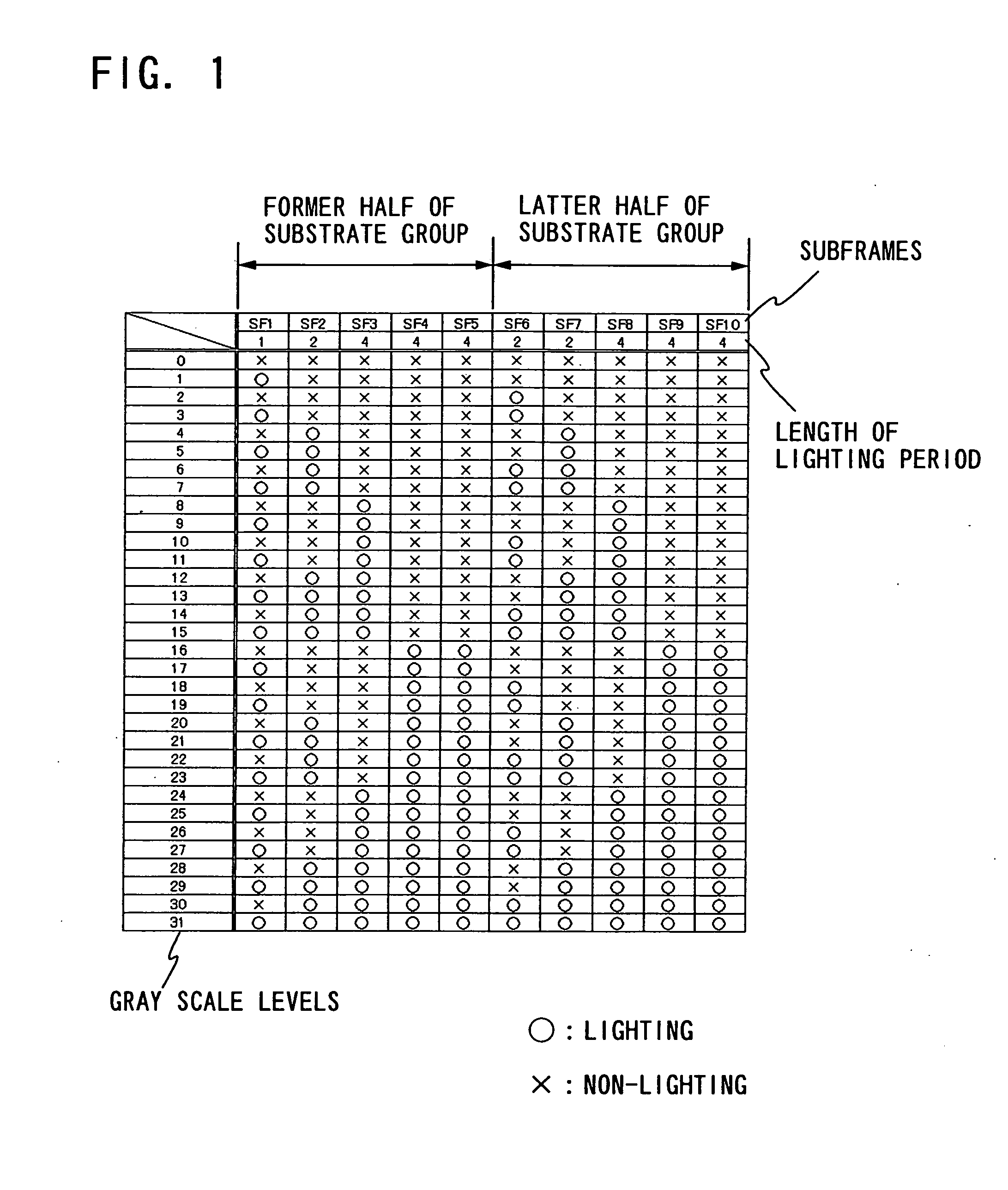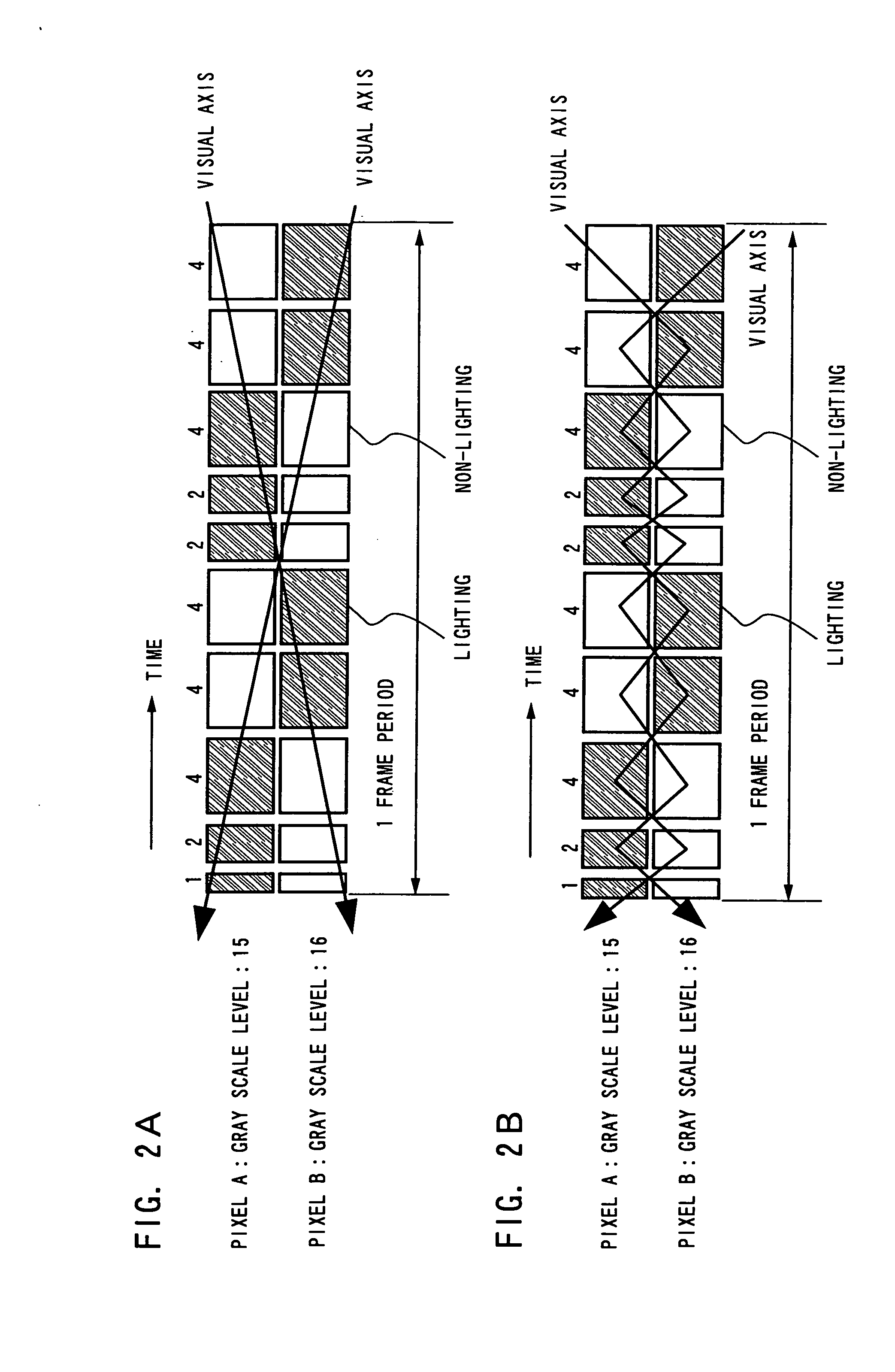Display device, driving method of the display device, and electronic device
- Summary
- Abstract
- Description
- Claims
- Application Information
AI Technical Summary
Benefits of technology
Problems solved by technology
Method used
Image
Examples
embodiment mode 1
[0101] Described in this embodiment mode is an example in which a driving method of the invention is applied to the case of a 5-bit display (32 gray-scale levels) and is applied to the case of a 6-bit display (64 gray-scale levels).
[0102] In an example of a driving method of this embodiment mode, according to a conventional time gray scale method, a subframe corresponding to a bit belonging to a first bit group is divided into four, a subframe corresponding to a bit belonging to a second bit group is divided into two, and a subframe corresponding to a bit belonging to a third bit group is not divided. Then, one frame is divided into two subframe groups which are a former half and a latter half, and each two of the divided bits belonging to the first bit group are arranged in each subframe group. One of the divided bits belonging to the second bit group is arranged in each subframe group, and the bits belonging to the third bit group are arranged in one or both of the subframe group...
embodiment mode 2
[0186] Described in Embodiment Mode 1 is the case where one frame is divided into two subframe groups. However, according to the driving method of the invention, one frame can also be divided into three or more subframe groups. In this embodiment mode, therefore, description is made on the case where one frame is divided into three or more subframe groups, as an example. Note that the number of subframe groups is not limited to 2 or 3, and may be arbitrarily determined.
[0187] According to an example of a driving method of this embodiment mode, according to a conventional time gray scale method, subframes corresponding to bits belonging to a first bit group are divided into 6, subframes corresponding to bits belonging to a second bit group are divided into 3, and subframes corresponding to bits belonging to a third bit group are not divided, first. Then, one frame is divided into three subframe groups, and each two of the divided bits belonging to the first bit group are arranged in...
embodiment mode 3
[0204] In this embodiment mode, description is made on an example of a timing chart. Although the selection method of subframes in FIG. 1 is used as an example of a selection method subframes, the invention is not limited to this. The invention can easily be applied to another selection method of subframes, another number of gray scale levels, and the like.
[0205] In addition, although an appearance order of subframes is an order of SF1, SF2, SF3, SF4, SF5, SF6, SF7, SF8, FS9, and SF10 as an example, the invention is not limited to this and can be applied to another order as well.
[0206] First, FIG. 24 shows a timing chart in the case where a period of writing a signal to a pixel and a period of lighting are separated. At first, signals for one screen are input to all pixels in a signal writing period. During this period, the pixels do not emit light. After the signal writing period, a lighting period begins and a pixel emits light. The length of the lighting period at this time is ...
PUM
 Login to View More
Login to View More Abstract
Description
Claims
Application Information
 Login to View More
Login to View More - R&D
- Intellectual Property
- Life Sciences
- Materials
- Tech Scout
- Unparalleled Data Quality
- Higher Quality Content
- 60% Fewer Hallucinations
Browse by: Latest US Patents, China's latest patents, Technical Efficacy Thesaurus, Application Domain, Technology Topic, Popular Technical Reports.
© 2025 PatSnap. All rights reserved.Legal|Privacy policy|Modern Slavery Act Transparency Statement|Sitemap|About US| Contact US: help@patsnap.com



